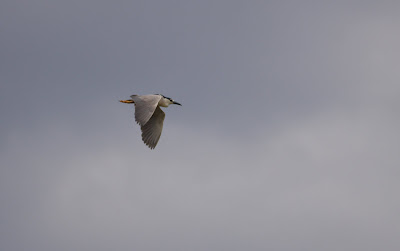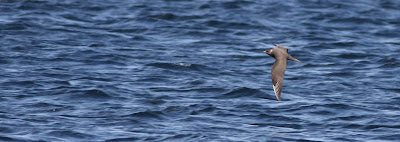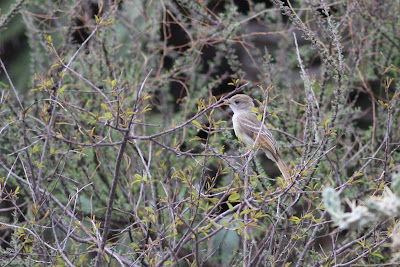Bird watching and photography in central Mexico E-MAIL: jontyhiley@hotmail.com for info on tours
Sunday, December 11, 2011
Winter UK 2011/2012
I've added a new page showing some pictures from this winter. Find it down the left-hand side of the blog.
Sunday, September 4, 2011
Scottish Highlands (3) - 'Whale' Cruise
Some decent birding around the North-West coast of Scotland this weekend, including a boat trip out from Gairloch into the waters off the north coast of Skye. On the water were plenty of Auks including Guillemots, Razorbills and a fledged Puffin.


Hundreds of Kittiwakes and Gannets as well. And the fishing Terns attracted some pirates.

Kicking Off
The tour disappointingly didn't throw up any Whales. 3 European Storm Petrels and a Sooty Shearwater made up for this though..
Meanwhile inshore along the coast near Gairloch, we stumbled upon great numbers of Divers, including summer plumaged Red-throated and a raft of 20 Black-throated at Red Point.
Wednesday, August 24, 2011
Scottish Highlands (2) - Seabird Spectacle
The east coast of Scotland in late August is always likely to throw up some good birds, and true to form, a couple of seaside trips produced some great species.
Dornoch 15/8
Arctic Skua - 6
Great Skua - 1
Kittiwake - 20
Fulmar - 2
Sandwich/Common/Arctic Tern - many

Arctic Tern
 Kittiwake
Kittiwake
Gannet
 Shag
Shag
Tarbat Ness 21/8
Arctic Skua - 8
Great Skua - 1
Manx Shearwater - 1
Kittiwake 30
Fulmar - 6
Shag - 40
Gannet - 60
Arctic Tern - 30
Sandwich Tern - 100
Common Tern - 10
Arctic Skuas
Plenty of waders as well, including Sanderling, Dunlin, Knot, Turnstone and Ringed Plovers. Worth mentioning a couple more Scottish specialities as well. Hunting over Cromarty Firth I had 2 Ospreys, and driving through the Black Isle, I had 5 Red Kites soaring.
Sunday, August 21, 2011
Scottish Highlands (1) - Mountain marvels
Well, the first non-Mexico post finally. I'm sad no longer to be writing about the fantastic birds and sites of Queretaro, and hopefully one day I'll be back to revisit some of these old haunts.
Birding goes on, though, and what better way to start a new chapter than with reports from one of the great birding areas of the UK - the Scottish Highlands. I'm here for a few weeks this summer, and am hoping to catch up with some enigmatic species. May is the best time of year to visit the highlands for birds, but with luck and perseverance, there is always good birds to be found...
I'm starting with reports from two climbs in the Cairngorms. Such days out have a double benefit. There isn't much better than spending a day climbing some of the highest mountains in Britain, and these summits also hold some of the rarest birds on these isles.
Firstly, it was up Carn Ban Mor and Sgor Gaoith. Once up on the moors, there wasn't a lot of bird life. A few Meadow Pipits and a single Wheatear were the only species until I got to the top and it started to liven up. Firstly a flock of calling Golden Plover, and then one of the specialities.



Yep, a flock of 6 Dotterel. Pictured here are males (top two) and a female (below). This species only breeds on very high peaks in Scotland, but can occasionally be seen on migration in lowland Britain.
Carn Ban Mor didn't actually yield much more until I got down to below the tree line where I was greeted by another character that can only be found in this special region of the UK.
This bird was in a mixed species flock including Coal, Blue and Great Tits and a Willow Warbler. Also in the pine woods, I had Bullfinches and G.S.Woodpecker.
Though I was happy with Dotterel, there was one high altitude species which had eluded me and I was keen for another crack at what must be one of Britain's best birds. Hence yesterday, I climbed up the Cairn Gorm at first light, before other walkers disturbed this popular mountain. This is what I was after...
Snake in the grass?
No, this is the Ptarmigan. Firstly 2, then flocks of 4 and 7. Extremely pleased to have connected with these fellas. A little bit later, things got better when I stumbled upon 4 juvenile Snow Buntings, yet another bird which only breeds up here.
More to follow..
Wednesday, July 13, 2011
Presa Centenario fighting back
The start of the rainy season has resulted in the water levels at the Presa in Tequis starting to rise again. It's great news, and if it continues, then as we enter the autumn and winter, it will be teeming with birds again.







Nice to see some ducks had returned to the reservoir. I had about 60 Mexican Ducks and 40+ Ruddy Ducks. Also on the water, a handful of American Coots, 2 gorgeous Black-necked Grebes and a couple of Least Grebes.


Mexican Ducks

Eared (Black-necked) Grebe
There were a large number of Cattle Egret (and 1 Black-crowned Night Heron) feeding at the far end of the reservoir, and as I was walking around I could see that the flocks were gradually leaving and flying towards their roost in the centre. Positioned myself under the flight path and fired off some nice shots of them.

Cattle Egrets
Things are starting to pick up on the wader front as well. Killdeers were literally everywhere. Without doubt, there were at least 100 breeding pairs. The swampy area at the far end provided some further treats as well - 50 Black-necked Stilts including some with young, 4 American Avocets, 30 Lesser Yellowlegs and 1 Greater Legs.



Black-necked Stilts
In the scrub, Cactus Wrens, Curve-billed Thrashers, Lesser Goldfinches, House Finches, Bewick's Wren. I also walked back along the river, picking up Clay-coloured Thrushes, Black Phoebe, Golden-fronted Woodpecker, Cassin's Kingbird.
Tuesday, July 12, 2011
Hummers
Presa de Colon
Visited the Presa de Colon on Sunday afternoon for some sailing and windsurfing. Needless to say, I spent a lot of time in the water! Fortunately, there were some decent birds around to cheer me up.
I was pleased to see a good variety of water birds, including 60+ Neotropic Cormorants, an unseasonal Great Blue Heron, lots of Black-crowned Night Herons (breeding nearby?), Cattle, Great and Snowy Egrets, and 3 gorgeous Pied-billed Grebes on the water.


Black-crowned Night Herons

'Farm' Ducks!


Pied-billed Grebe
In the scrub around the reservoir, I had the usual semi-desert suspects, and a nice bonus, this Ash-throated Flycatcher. Above were up to 7 Turkey Vultures.
Sunday, July 10, 2011
Cerro Grande and beyond
A friend and I walked up one of the large mountains East of Tequisquiapan on Friday. It amazed me how quickly the avifauna changed once I had gained some altitude and left the town well behind. Here were birds you wouldn't dream of seeing in Tequis - 5 species of Hummingbird, for example, including Violet-crowned and Broad-billed low down, and then hordes of Magnificent further up, together with White-eared and the brilliant agave-loving Lucifer Hummingbirds.
Singing Canyon Towhees everywhere,and, even better, singing Spotted Towhee (Rufous-sided). Still better, another lifer, a Black-chinned Sparrow, blasting away from the top of a bush. A first-winter Black-headed Grosbeak was another surprise here, and I had 2 American Robins.
More regular fare came in the way of Golden-fronted Peckers everywhere, Northern Ravens, Turkey Vultures, Vermilion Flycatchers, Canyon and Cactus Wrens.
Unfortunately, we walked at a pretty fast pace, so I couldn't take in everything. Undoubtedly, if i return here this week and spend more time, I will see a lot more. What a find!
Thursday, July 7, 2011
Breeding Clay-colored Robin
Friday, July 1, 2011
San Joaquin - Wet!
2 days of non-stop rain meant that there wasn't much to see up in San Joaquin. However, the following showed briefly:
Painted Redstart,
Crescent-chested Warbler,
Canyon Towhee,
Rufous-sided Towhee,
Yellow-eyed Junco,
Hepatic Tanager,
Blue-throated Hummingbird,
Orange-billed Nightingale Thrush,
Red-tailed Hawk,
Northern Raven,
Turkey Vulture,
Brown-backed Solitaire



Blue-throated Hummingbird (top) and Hepatic Tanger
Sunday, June 26, 2011
Thursday, June 23, 2011
"Sedge-Fund Analyst"
Post-glaushous i spend the rest of the day at Dungeness Point/RSPB and Rye Harbour NR. Two really nice reserves with plenty of summer birding to be done.
The weather wasn't kind, but we know better than to expect nice conditions at the patch.
Here's a selection of the day's shots. 74 species in total, not bad - highlights.
Cuckoo
5 Raptors
Lots of warblers
The glauc
Tern colony
The Sedge Warbler was really obliging, popping up in front of the hide and singing for a good 10 minutes.
The weather wasn't kind, but we know better than to expect nice conditions at the patch.
Here's a selection of the day's shots. 74 species in total, not bad - highlights.
Cuckoo
5 Raptors
Lots of warblers
The glauc
Tern colony
The Sedge Warbler was really obliging, popping up in front of the hide and singing for a good 10 minutes.
The tern colonies at Rye are fantastic with good numbers of breeding Little and more Sandwich/Common than you can shake a stick at.
Fledgling skylark already mastering song flight.
And a barrell roll from the Sanger before my camera ran out of battery.
Subscribe to:
Posts (Atom)


































